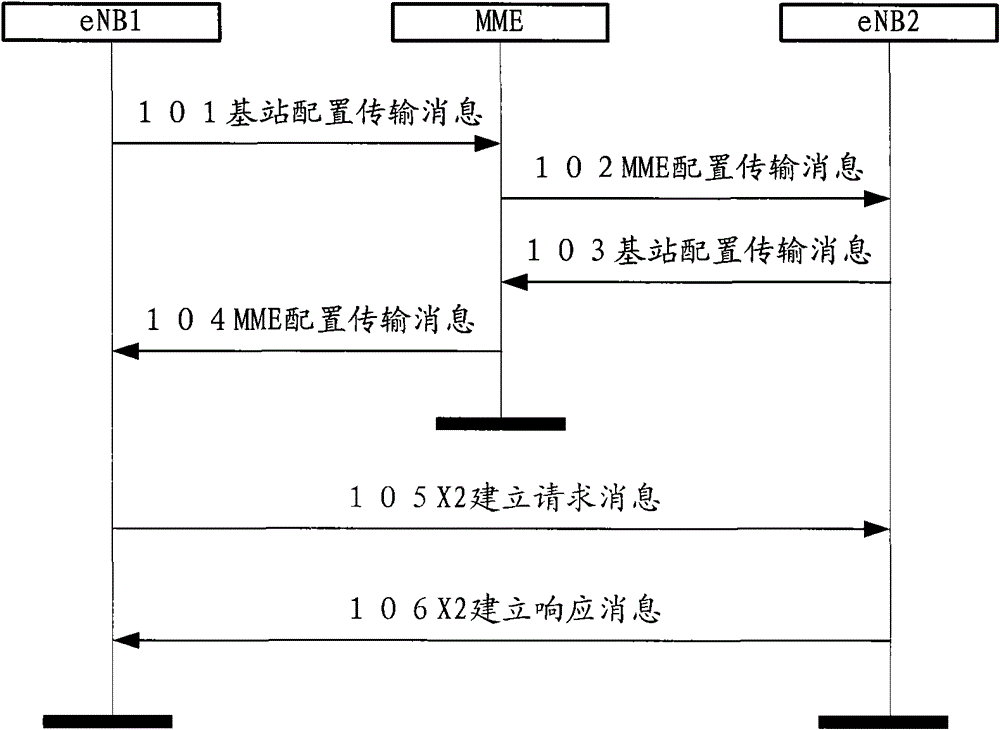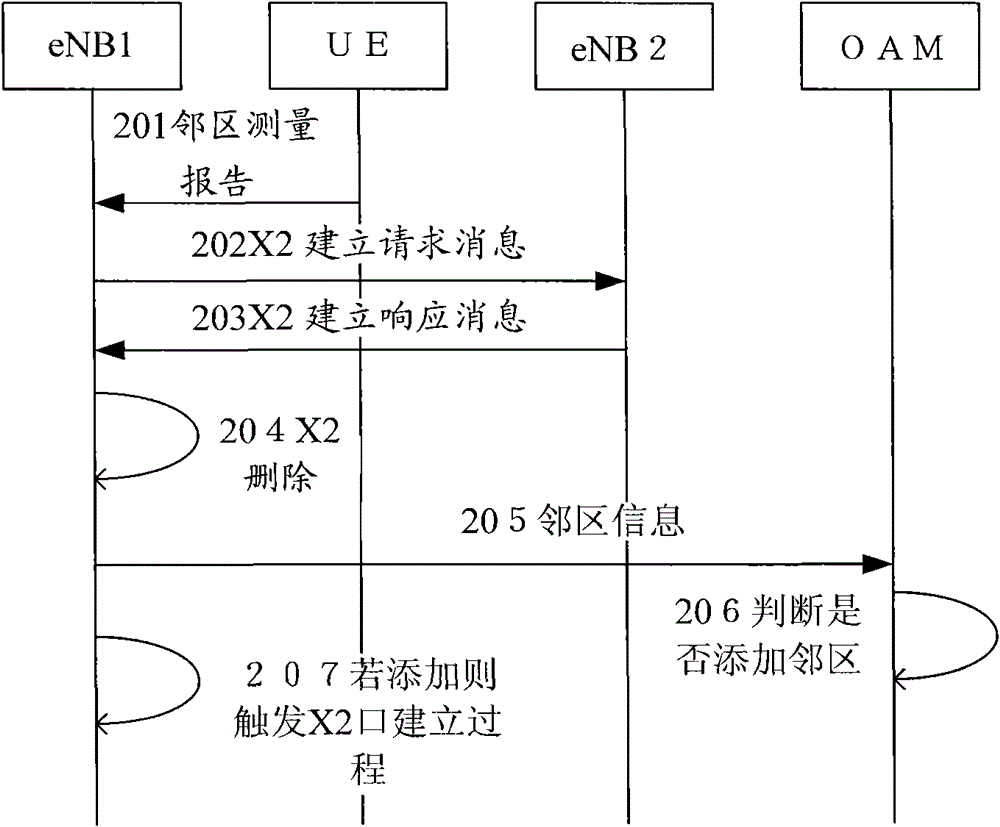Method, device and system for adding neighbor cell
A technology of adjacent cells and adjacent cells, applied in the field of LTE system, can solve the problems of resource waste and waste, and achieve the effect of improving utilization rate, avoiding occupation, and reducing frequent interaction
- Summary
- Abstract
- Description
- Claims
- Application Information
AI Technical Summary
Problems solved by technology
Method used
Image
Examples
Embodiment 1
[0062] figure 2 The method for adding a neighboring cell in the OAM controlled mode for this embodiment includes:
[0063] 201: The UE discovers the neighbor cell through measurement and sends a neighbor cell measurement report to the source eNB (eNB1), and the report content is the neighbor cell identifier TCI under the target eNB (eNB2), including: ECGI and PCI;
[0064] 202: eNB1 obtains the transmission address information of eNB2 through MME, and initiates an X2SETUP REQUEST message to eNB2;
[0065] 203: After eNB1 receives the X2 SETUP RESPONSE message from eNB2, the establishment of the X2 interface is completed, and the neighbor cell information is obtained;
[0066] 204: eNB1 initiates the deletion of the X2 interface between eNB2 and releases the instance resources occupied by the X2 interface;
[0067] 205: eNB1 reports the neighbor cell information obtained from the X2 SETUP RESPONSE message to OAM;
[0068] 206: OAM judges whether to add the reported cell as ...
Embodiment 2
[0071] image 3 The method for adding a neighboring cell in the OAM free mode for this embodiment includes:
[0072] 301: The UE discovers the neighbor cell through measurement and reports it to eNB1, and the report content is the neighbor cell flag TCI under eNB2, including: ECGI and PCI;
[0073] 302: eNB1 obtains the transmission address information of eNB2 through MME, and initiates an X2 SETUPREQUEST message;
[0074] 303: After eNB1 receives the X2 SETUP RESPONSE message from eNB2, the establishment of the X2 interface is completed, and the neighbor cell information is obtained;
[0075] 304: eNB1 initiates the deletion of the X2 interface with eNB2, and releases the instance resources occupied by the X2 interface;
[0076] 305: eNB1 obtains neighbor cell information from the X2 SETUP RESPONSE message and reports it to OAM;
[0077] 306: OAM adds a neighbor cell, and synchronizes the added neighbor cell record to eNB1;
[0078] 307: After the neighbor cell record is ...
application example 1
[0080] Attached below Figure 4 , taking the decision not to add adjacent cells in the OAM controlled mode as an example to illustrate this method. The precondition is: the UE discovers the neighbor cell and reports the ECGI and PCI information of the neighbor cell to eNB1.
[0081] 401: After receiving the neighboring cell information sent by the UE, eNB1 obtains the transmission address information of eNB2 to which the neighboring cell belongs through the MME, including: the IP address and port number of the X2 port of eNB2;
[0082] 402: After eNB1 obtains the transmission address information of the neighboring eNB2, it initiates an X2 SETUPREQUEST message, fills the information of eNB1 into the Global eNB ID and Served Cell Information, and waits for eNB2 to respond;
[0083] 403: After eNB1 receives the X2 SETUP RESPONSE message of eNB2, it obtains the information of eNB2 from the Global eNB ID and Served Cell Information in the message, and obtains the neighbor cell inf...
PUM
 Login to View More
Login to View More Abstract
Description
Claims
Application Information
 Login to View More
Login to View More - R&D
- Intellectual Property
- Life Sciences
- Materials
- Tech Scout
- Unparalleled Data Quality
- Higher Quality Content
- 60% Fewer Hallucinations
Browse by: Latest US Patents, China's latest patents, Technical Efficacy Thesaurus, Application Domain, Technology Topic, Popular Technical Reports.
© 2025 PatSnap. All rights reserved.Legal|Privacy policy|Modern Slavery Act Transparency Statement|Sitemap|About US| Contact US: help@patsnap.com



